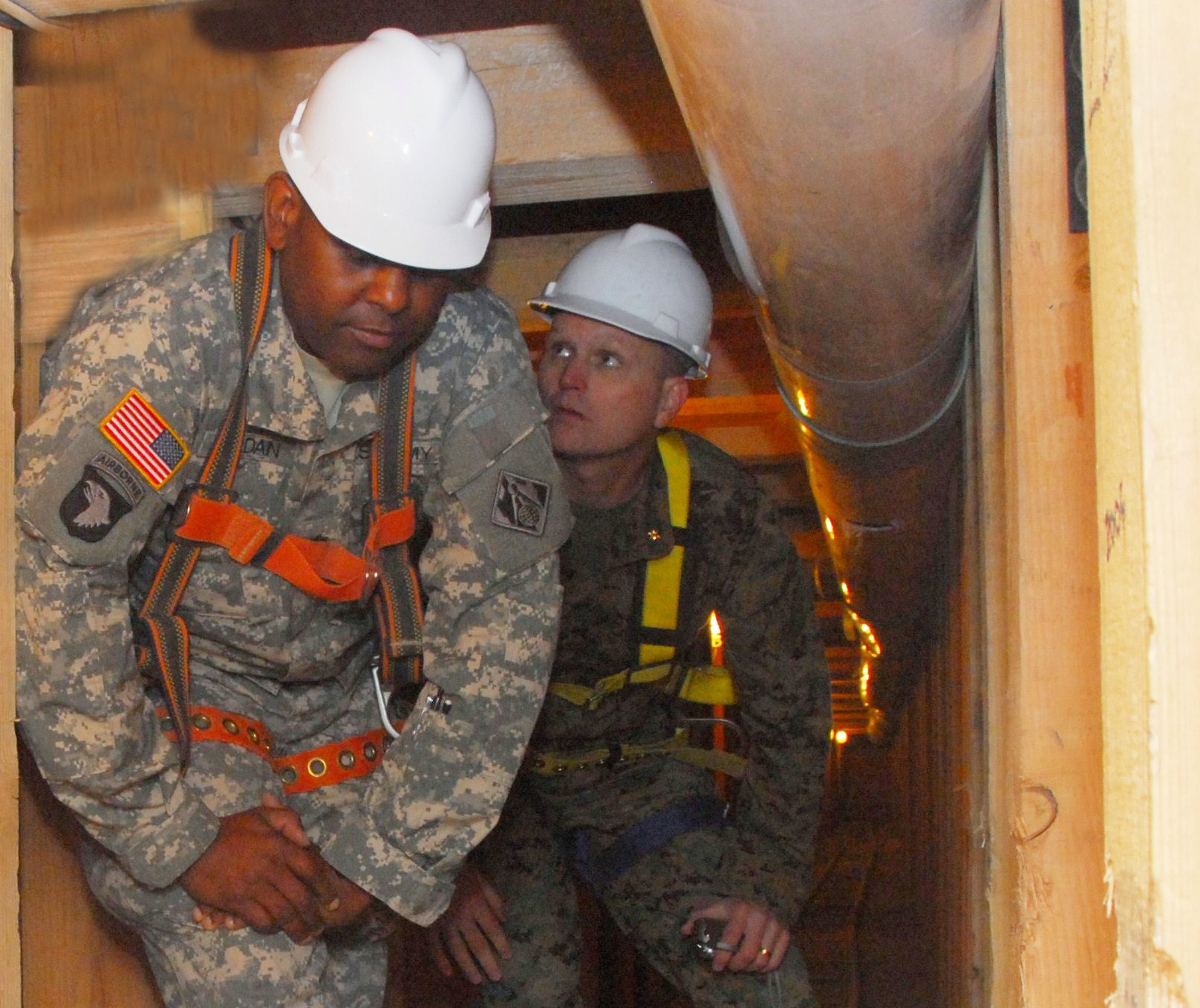
The effort to secure America’s borders has commanded enormous attention as a national security imperative for nearly a decade. As civilian law enforcement and military agencies gain ground with extensive fencing, increased patrols, and aerial surveillance, drug smugglers have taken to underground tunneling to continue their illicit activities. Their tunnels range from rudimentary, shallow holes and narrow pipes used to pass drug bundles, to elaborate structures with reinforced concrete walls and artificial lighting that people can walk through.
More than 100 border tunnels have been discovered by law enforcement agencies since 1990; 30 of them were found in the past five years. Furthermore, insurgents in Iraq and Afghanistan have used tunneling in their operations against American forces, which makes the threat of particular interest to the military. This was the impetus for the newly opened Joint Tunnel Test Range (JTTR) at U.S. Army Yuma Proving Ground (YPG), AZ, which replicates the kind of tunneling most commonly used by drug traffickers and insurgents and will be used to support a variety of tests of tunnel detection technologies, from handheld sensors to satellite imaging.
[raw][image align=”right” caption=”MAJ Eric Penrod (right), combat engineer for U.S. Northern Command, inspects the newly opened Joint Tunnel Test Range, a one-of-a-kind facility to test anti-tunneling technologies, at Yuma Proving Ground, AZ. (U.S. Army photo by Mark Schauer.)” linkto=”/web/wp-content/uploads/Cleared-tunnel-photo.jpg” linktype=”image_vt”]”/wp-content/uploads/Cleared-tunnel-photo.jpg” height=”246″width=”167″[/image][/raw]“YPG provides great security for the test site,” said MAJ Eric Penrod, Combat Engineer for U.S. Northern Command (USNORTHCOM) who oversaw the construction of the complex. “More importantly, the characteristics of the soil and dry environment closely reflect what we see on the southwest border, as well as what our DOD folks are seeing in Iraq and Afghanistan.”
“It expands our mission set in an area that is hardly touched by other facilities,” added Julio Dominguez, YPG Technical Director. “Anyone who reads the papers is aware of the threat that tunneling poses, and this gives us the opportunity to have a role in counteracting that activity.”
The Ideal Tunnel
YPG’s National Counterterrorism Counterinsurgency Test and Evaluation Center (NACCITEC) was established early in the last decade to test technology that counters terrorist and insurgent tactics in all forms. It attracted particular notice within DOD for its realistic mock villages and electromagnetic environments that simulate exactly those found in theater, a crucial component for testing counter-improvised explosive device technologies.
When USNORTHCOM initially identified the need for a tunneling test complex, the search for a suitable location focused on facilities that had tunnels in place. Unfortunately, the tunnels at these facilities were industrial-size, concrete-lined structures.
“Tunnels like that don’t match the threat we see on the southwest border from small, hand-dug tunnels with either minimal wood shoring or none at all,” Penrod explained. “Building a specialized tunnel at YPG turned out to be the best fit for our needs.”
The first stretch of completed tunnel is long and cramped, with wood cribbing accessed by a corrugated metal pipe shaft. Though it was deliberately constructed to mimic the kind of low-tech but ingenious methods of the most aggressive illicit tunnelers, the creation of the tunnel took months of advance planning, followed by months of work to excavate and build. Soil samples were taken at prospective sites across YPG’s expansive ranges to check for rock and other impediments before digging.
“A whole multitude of technologies were used to characterize this area prior to excavation,” said Jason Anderson, the NACCITEC Test Director for the project. “We know there is plenty of room for expansion, and that data will be available to our customers who are developing new items.”
The U.S. Army Engineer Research and Development Center (ERDC) designed and led the soil pre-characterization effort to ensure that the testers who use the tunnel will know every property of the soil.
“ERDC and our interagency partners spent months executing a detailed sampling and characterization plan so we can model and simulate any sensor response and inform testers if their technology is mature enough for field testing,” said Seth Broadfoot, Lead Geologist on ERDC’s Characterization Team. “This is the best-characterized complex on the planet.”
Excavation for the tunnel’s access shaft began in September. The access shaft was the only part of the tunnel created using heavy equipment. In the baking late-summer heat, a long length of corrugated metal pipe was placed, and a cement base was poured to enclose it. Then a four-man crew excavated the tunnel in a manner similar to that of an illicit tunneler. Though the diggers at one point encountered thicker rock than they had expected, the construction site was mostly free of the hard rock that is common in the region. The tunnel is equipped with safety features to protect personnel working underground, and the temperature is comfortably constant throughout the year, so artificial heating and cooling are not necessary.
The tunnel was finished and available for testing in January.
“This is a one-of-a-kind complex, and it was completed on cost and ahead of schedule,” said NACCITEC Director Greg Mitchell.
[list type=”arrow”]
- MARK SCHAUER is a public affairs writer at YPG. He holds a B.A. in history from Northern Arizona University where he is also pursuing an M.A. in English.







